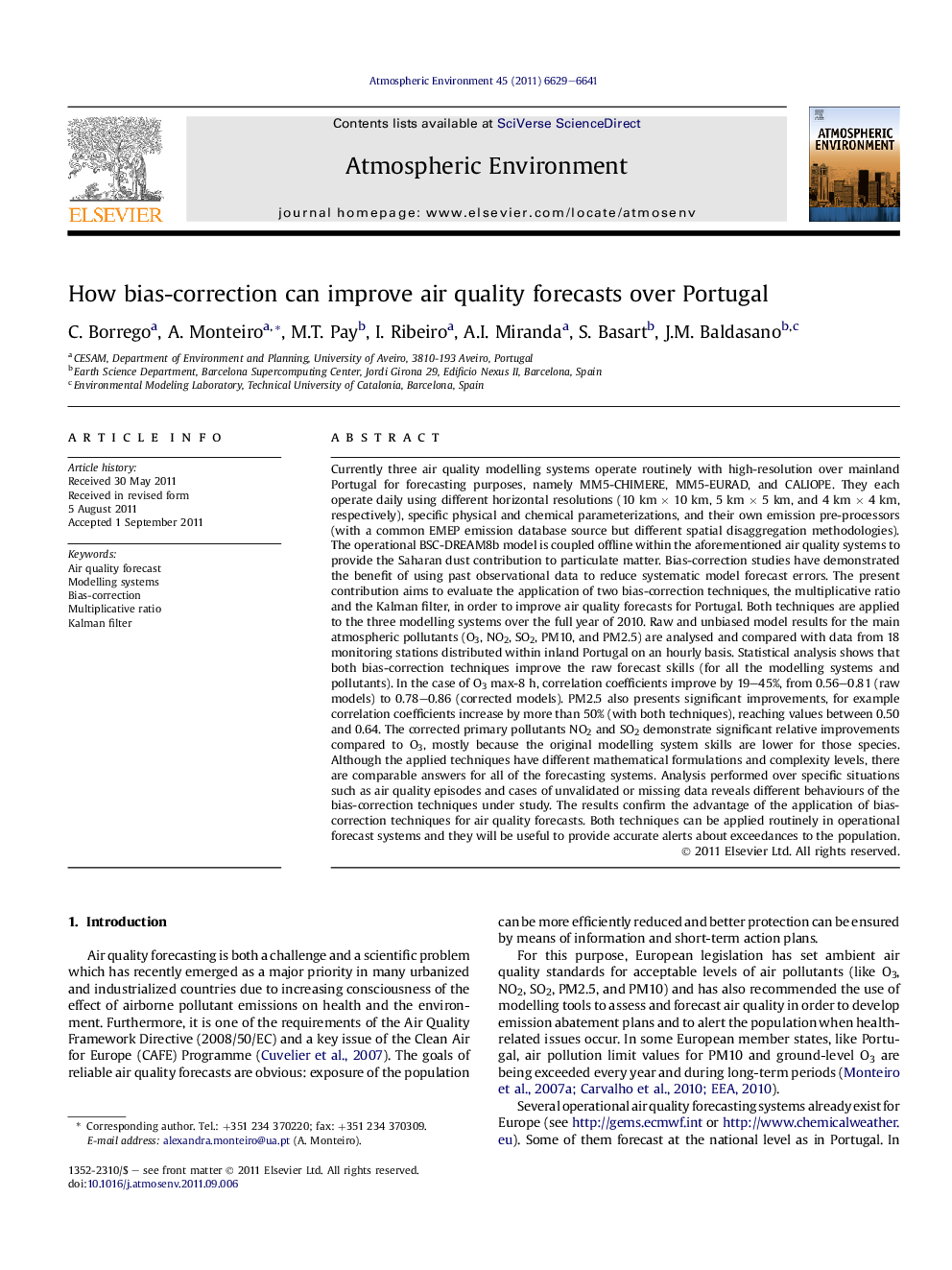| کد مقاله | کد نشریه | سال انتشار | مقاله انگلیسی | نسخه تمام متن |
|---|---|---|---|---|
| 4439201 | 1311012 | 2011 | 13 صفحه PDF | دانلود رایگان |

Currently three air quality modelling systems operate routinely with high-resolution over mainland Portugal for forecasting purposes, namely MM5-CHIMERE, MM5-EURAD, and CALIOPE. They each operate daily using different horizontal resolutions (10 km × 10 km, 5 km × 5 km, and 4 km × 4 km, respectively), specific physical and chemical parameterizations, and their own emission pre-processors (with a common EMEP emission database source but different spatial disaggregation methodologies). The operational BSC-DREAM8b model is coupled offline within the aforementioned air quality systems to provide the Saharan dust contribution to particulate matter. Bias-correction studies have demonstrated the benefit of using past observational data to reduce systematic model forecast errors. The present contribution aims to evaluate the application of two bias-correction techniques, the multiplicative ratio and the Kalman filter, in order to improve air quality forecasts for Portugal. Both techniques are applied to the three modelling systems over the full year of 2010. Raw and unbiased model results for the main atmospheric pollutants (O3, NO2, SO2, PM10, and PM2.5) are analysed and compared with data from 18 monitoring stations distributed within inland Portugal on an hourly basis. Statistical analysis shows that both bias-correction techniques improve the raw forecast skills (for all the modelling systems and pollutants). In the case of O3 max-8 h, correlation coefficients improve by 19–45%, from 0.56–0.81 (raw models) to 0.78–0.86 (corrected models). PM2.5 also presents significant improvements, for example correlation coefficients increase by more than 50% (with both techniques), reaching values between 0.50 and 0.64. The corrected primary pollutants NO2 and SO2 demonstrate significant relative improvements compared to O3, mostly because the original modelling system skills are lower for those species. Although the applied techniques have different mathematical formulations and complexity levels, there are comparable answers for all of the forecasting systems. Analysis performed over specific situations such as air quality episodes and cases of unvalidated or missing data reveals different behaviours of the bias-correction techniques under study. The results confirm the advantage of the application of bias-correction techniques for air quality forecasts. Both techniques can be applied routinely in operational forecast systems and they will be useful to provide accurate alerts about exceedances to the population.
► We evaluate bias-correction techniques to improve air quality forecast of Portugal.
► Multiplicative ratio and Kalman filter approaches are evaluated and intercompared.
► We consider three air quality forecasting systems that operates daily over Portugal.
► We find that both bias-correction techniques improve the raw forecasts skills.
► The bias-correction techniques performed differently for specific situations.
Journal: Atmospheric Environment - Volume 45, Issue 37, December 2011, Pages 6629–6641